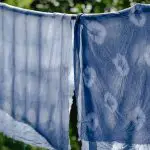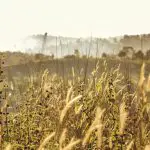Looking to keep your garden free from unwanted plants? Discovering the most effective fabric for weed control is crucial for maintaining a pristine outdoor space.
With various options available, understanding the benefits and drawbacks of each material will help you make an informed decision.
Whether it's landscape fabric, mulch mats, woven polypropylene, or others, selecting the right fabric is essential for achieving weed-free landscaping.
Explore the unique properties of each fabric and how they can suit your specific gardening needs.
Let's delve into the world of weed control fabrics and find the perfect solution for your green space.
Key Takeaways
- Woven polypropylene and non-woven polypropylene are both durable options for weed control fabric, with woven polypropylene being tear-resistant and suitable for various applications, while non-woven polypropylene is environmentally friendly and recyclable.
- Cardboard and newspaper are cost-effective and biodegradable options for weed control, with cardboard effectively blocking sunlight and eventually enriching the soil, and newspaper acting as a natural weed barrier when wet and enriching the soil as well.
- Eco-friendly weed control methods, such as using newspaper sheets and wetting them thoroughly, not only suppress weed growth but also help maintain a healthy garden ecosystem and reduce the need for chemical-based weed control.
- Burlap is a biodegradable option that adds rustic charm to the garden and can be composted after use, while plastic sheeting is a durable and cost-effective solution for long-term weed suppression, although it inhibits water and air from reaching the soil and may not be as aesthetically pleasing.
Landscape Fabric
When installing landscape fabric, ensure that it's securely anchored to prevent weed growth. The durability of the fabric is essential in determining its effectiveness in weed control. It's important to choose a landscape fabric that's durable enough to withstand the elements and resist degradation over time. This will ensure that it remains effective in preventing weed growth and reduces the need for frequent replacements.
When considering the cost-effectiveness of landscape fabric, it's crucial to weigh the initial investment against the long-term benefits. High-quality, durable fabric may have a higher upfront cost, but its longevity and effectiveness in weed control can make it a more cost-effective option in the long run. It's also essential to properly install and anchor the fabric to maximize its effectiveness and durability.
Mulch Mats
Looking to keep your garden weed-free and your plants healthy? Mulch mats might just be the solution you're looking for.
These mats offer a range of benefits, including weed suppression and water retention, and they're easy to install too.
Plus, they're compatible with a variety of plants, making them a versatile option for your garden.
Mulch Mat Benefits
To benefit from mulch mats, you should consider using a high-quality fabric that effectively suppresses weed growth. Mulch mats offer numerous benefits, including weed control, moisture retention, and protection for plant roots. They are also effective in preventing soil erosion and maintaining a consistent soil temperature. The following table summarizes the key benefits of using mulch mats:
| Benefits | Details |
|---|---|
| Weed Control | Suppresses weed growth by blocking sunlight and preventing weed germination |
| Moisture Retention | Helps soil retain moisture by reducing evaporation and conserving water |
| Root Protection | Shields plant roots from extreme temperatures and physical damage |
| Erosion Prevention | Prevents soil erosion by minimizing the impact of rain and wind |
| Soil Temperature Regulation | Maintains a consistent soil temperature, promoting optimal growing conditions |
Using a high-quality mulch mat can significantly improve the effectiveness of weed control while enhancing overall plant health.
Installation Tips
Consider using a durable, high-quality fabric for the installation of mulch mats to ensure effective weed control and maximize the benefits for your garden. Proper installation is crucial for long-term effectiveness.
When installing mulch mats, ensure that the fabric completely covers the soil and overlaps at the seams to prevent weed growth. Use fabric stakes or pins to secure the edges and prevent shifting.
It's also important to regularly inspect the mulch mats for any signs of wear or damage. Proper maintenance, such as replacing worn-out or torn fabric, is essential to ensure durability and continued weed control.
Plant Compatibility
When using mulch mats, ensure that the plants you choose are compatible with the fabric to optimize weed control and promote healthy growth. Selecting the right plants for your mulch mats can significantly impact plant growth and soil health. Consider the following table for plant compatibility with mulch mats:
| Compatible Plants | Incompatible Plants |
|---|---|
| Perennials | Annuals |
| Shrubs | Vines |
| Trees | Groundcovers |
| Ornamental Grasses | Vegetables |
Choosing compatible plants not only aids in weed control but also promotes healthier soil. By considering plant compatibility, you can create an environment where your plants thrive while minimizing the growth of unwanted weeds.
Woven Polypropylene
Why should you choose woven polypropylene for weed control in your garden?
Woven polypropylene offers several benefits that make it a top choice for keeping weeds at bay.
Unlike other polypropylene alternatives, woven polypropylene is durable and tear-resistant, making it ideal for long-term weed control.
Its tightly woven design blocks sunlight, preventing weed growth while still allowing water and nutrients to penetrate the soil.
This means your plants can thrive while unwanted weeds are suppressed.
Woven polypropylene is also resistant to degradation from UV exposure, ensuring that it maintains its effectiveness over time.
Its strength and durability make it suitable for use in various garden applications, from raised beds to landscaping projects.
Additionally, woven polypropylene can be easily cut and customized to fit your specific gardening needs.
When compared to other weed control fabrics, woven polypropylene stands out as a reliable and cost-effective solution for maintaining a weed-free garden.
Whether you're a seasoned gardener or just starting out, choosing woven polypropylene can help you achieve a healthier, more vibrant garden with minimal weed interference.
Non-Woven Polypropylene
The woven polypropylene discussed earlier isn't the only option for weed control fabric; another effective choice is non-woven polypropylene. Non-woven polypropylene has gained popularity for its weed control properties and environmental benefits. Here's why it's a great option:
- Environmental Impact:
Non-woven polypropylene is environmentally friendly as it's a recyclable material. It helps in weed control without the need for harmful chemicals, making it a sustainable choice for your garden or landscaping needs.
- Durability and Effectiveness:
Non-woven polypropylene is known for its durability and effectiveness in preventing weed growth. Its strong, synthetic fibers provide excellent protection against weeds while allowing air, water, and nutrients to penetrate the soil, promoting healthy plant growth.
- Versatility:
Non-woven polypropylene comes in various thicknesses and can be easily cut to fit different garden or landscape areas. This versatility makes it suitable for a wide range of weed control applications while maintaining its effectiveness.
Considering its environmental impact, durability, effectiveness, and versatility, non-woven polypropylene stands out as an excellent choice for weed control fabric.
Cardboard
Moving on to another alternative for weed control fabric, consider using cardboard as a cost-effective and biodegradable option.
Cardboard is an excellent alternative for suppressing weeds in your garden or landscape. It offers an environmentally friendly solution as it can be easily sourced from old boxes or packaging materials.
Cardboard effectively blocks out sunlight, preventing weed growth, and eventually breaks down into the soil, adding organic matter. When using cardboard as a weed barrier, ensure that it's laid flat without any gaps to maximize its effectiveness. It's crucial to wet the cardboard thoroughly after laying it down to prevent it from blowing away and to encourage decomposition.
Cardboard also provides insulation to the soil, helping to retain moisture and regulate soil temperature. However, keep in mind that cardboard may not be as visually appealing as other weed control fabric options, and it may need to be covered with mulch to improve its aesthetic appeal.
Newspaper
If you're looking for an eco-friendly option for weed control, newspaper might be the solution for you.
Using newspaper as a weed barrier is a cost-effective and sustainable way to keep unwanted plants at bay.
In the next few points, we'll discuss the benefits and best practices for using newspaper as a weed control method.
Newspaper as Weed Barrier
When using newspaper as a weed barrier, ensure that it's laid down thickly to effectively suppress weed growth. Newspaper is an inexpensive and eco-friendly option for organic weed control.
Here's how to use newspaper effectively as a weed barrier:
- Lay down at least 10 sheets of newspaper to block sunlight and prevent weed growth.
- Wet the newspaper thoroughly to prevent it from blowing away and to encourage decomposition.
- Cover the newspaper with a layer of organic mulch to improve its appearance and help retain moisture in the soil.
Newspaper can be an effective alternative to commercial weed barriers, providing a sustainable and biodegradable option for controlling weeds in your garden.
Eco-Friendly Weed Control
To effectively control weeds in an eco-friendly manner, lay down at least 10 sheets of newspaper, wetting it thoroughly to prevent it from blowing away and to encourage decomposition.
This organic alternative is a sustainable solution for weed control in your garden. Newspaper acts as a natural weed barrier, blocking sunlight and preventing weed growth.
As the newspaper decomposes, it enriches the soil and reduces the need for chemical-based weed control methods. This method isn't only eco-friendly but also cost-effective.
Using newspaper as a weed barrier aligns with environmentally conscious practices and helps maintain a healthy garden ecosystem.
Burlap
You can use burlap as an effective fabric for weed control in your garden. Burlap is a versatile and natural option for suppressing weeds while still allowing air and water to pass through.
Here's why burlap is a great choice for weed control:
- Biodegradable: Unlike synthetic weed control fabrics, burlap is biodegradable, making it an eco-friendly choice for your garden. Once it has served its purpose, you can simply compost it, reducing waste and benefiting your garden at the same time.
- Natural Appearance: Burlap blends well with natural surroundings and adds a rustic charm to your garden. Its earthy tones and textured appearance make it an attractive choice for weed control, especially in organic or visually sensitive landscapes.
- Versatility: Burlap can be used in various ways for weed control, such as creating mulch, covering garden beds, or wrapping the base of trees and shrubs. Its flexibility and adaptability make it a practical and efficient option for keeping weeds at bay.
When considering burlap for weed control, it's important to note that there are alternatives available, but burlap's effectiveness and natural qualities make it a compelling choice for many gardeners.
Plastic Sheeting
For effective weed control in your garden, consider using plastic sheeting as a barrier against unwanted growth. Plastic sheeting is an effective option for weed control due to its ability to block sunlight and prevent weed germination. It's also a durable and cost-effective solution for long-term weed suppression.
However, when using plastic sheeting, it's important to consider the potential drawbacks. One of the main concerns is that plastic sheeting can inhibit water and air from reaching the soil, which may impact the overall health of your garden. Additionally, plastic sheeting can be less aesthetically pleasing compared to other fabric options.
If you're looking for alternatives to plastic sheeting, consider using landscape fabric or biodegradable mulch. These alternatives offer effective weed control while still allowing water and air to penetrate the soil.
When choosing the right weed control fabric for your garden, it's essential to weigh the advantages and disadvantages of plastic sheeting and consider the specific needs of your plants and soil.
Frequently Asked Questions
Can Landscape Fabric Be Used in Vegetable Gardens?
Yes, landscape fabric can be used in vegetable gardens. It offers benefits like weed suppression and moisture retention. Drawbacks include potential for decreased soil health. Alternatives for weed control in gardens include mulching and hand weeding.
How Long Do Mulch Mats Last Before Needing to Be Replaced?
Mulch mats can last for several years, depending on the material and environmental conditions. Regular maintenance, such as checking for tears or deterioration, is essential. Replacement frequency varies but typically every 2-5 years.
Is Woven Polypropylene Fabric Biodegradable?
Yes, woven polypropylene fabric is not biodegradable. For biodegradable options, consider natural materials like burlap or paper mulch. These options address environmental concerns and offer effective weed control.
Can Non-Woven Polypropylene Fabric Be Used in Organic Gardening?
Yes, non-woven polypropylene fabric can be used in organic gardening. It is effective for weed control and sustainable. It's a great choice for keeping your garden free from weeds while maintaining eco-friendly practices.
What Are the Potential Environmental Impacts of Using Plastic Sheeting for Weed Control?
Using plastic sheeting for weed control can have potential hazards like plastic waste, soil contamination, and negative environmental impact. Consider alternative solutions to address sustainability concerns, such as biodegradable mulch or organic weed barriers.
- Does Chiffon Fabric Stink - July 15, 2025
- Does Chiffon Fabric Affect the Economy - July 15, 2025
- Does Cotton Fabric Have a Nap - July 15, 2025







